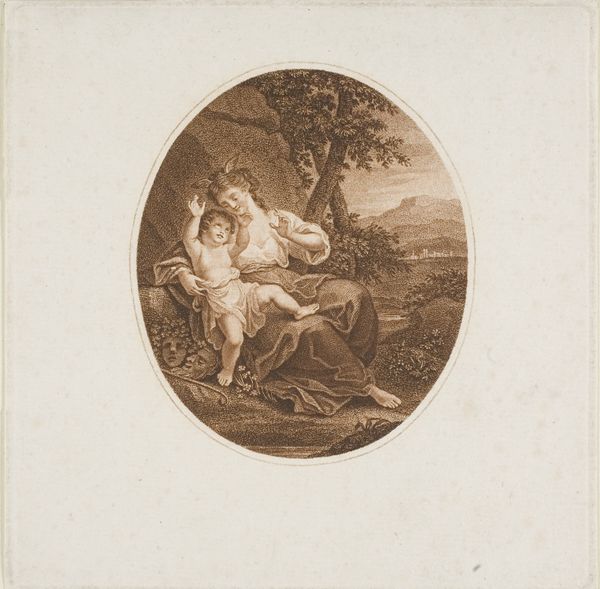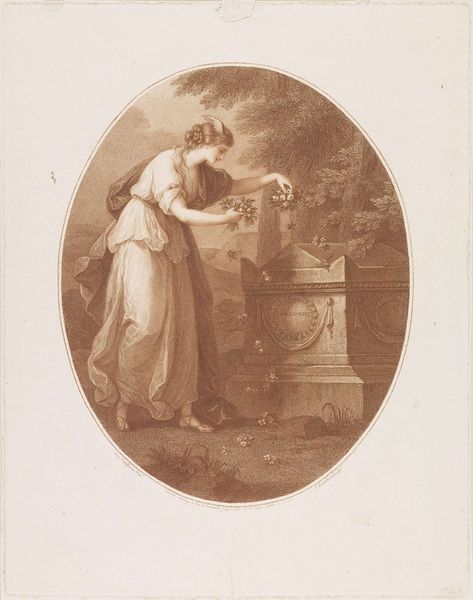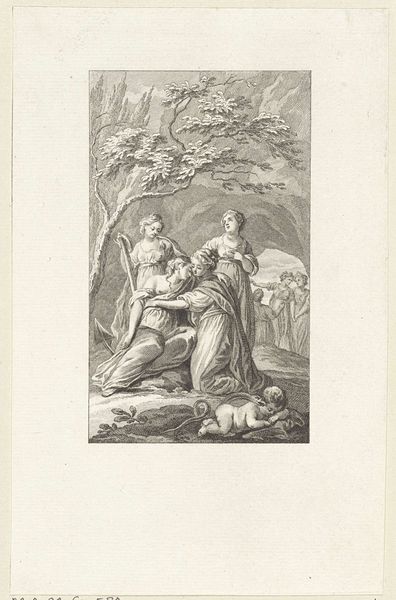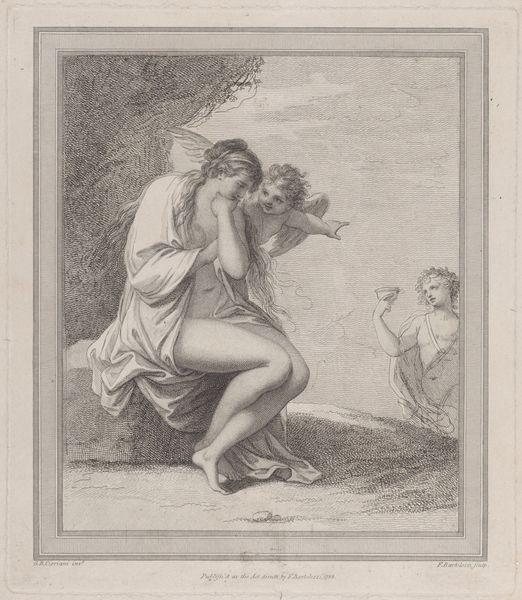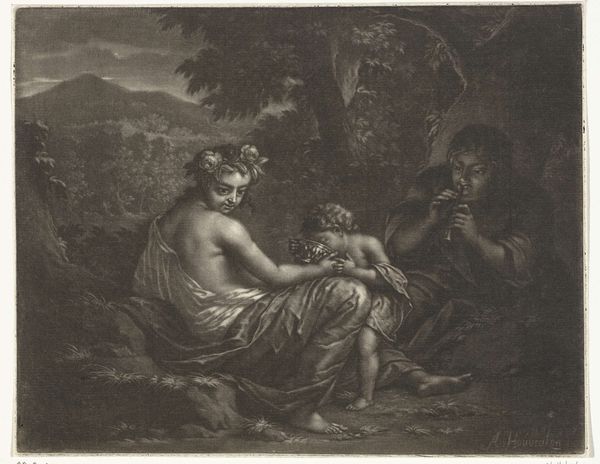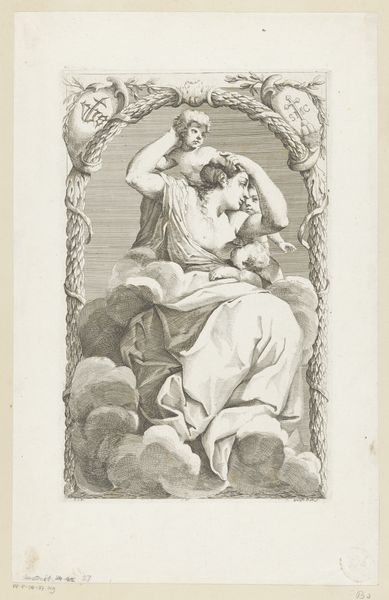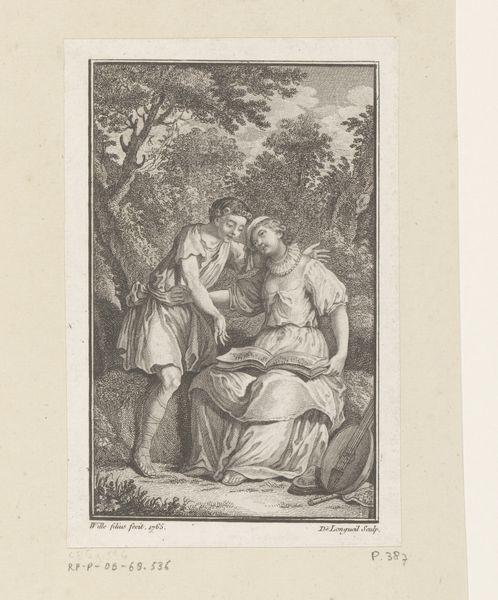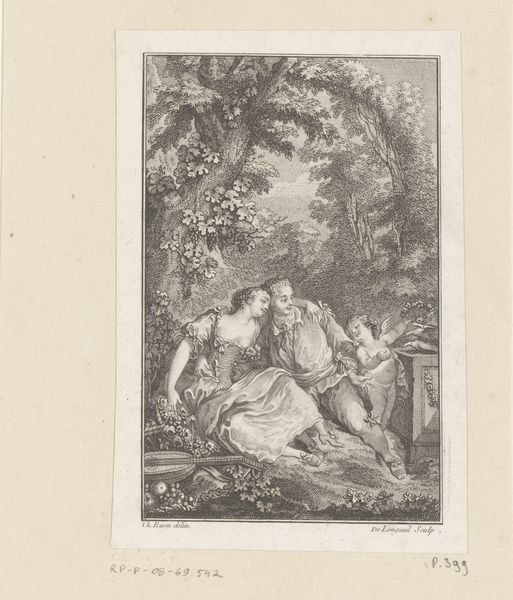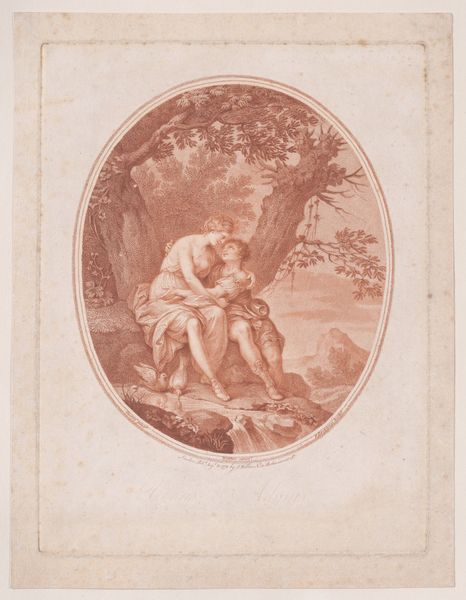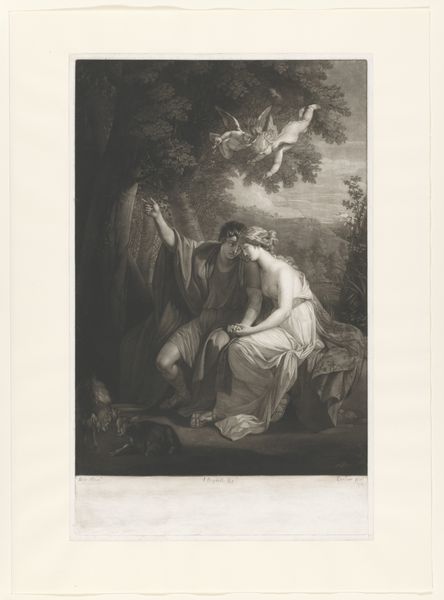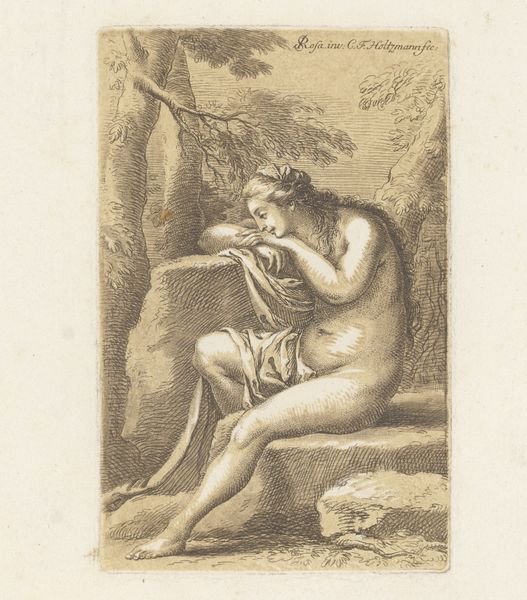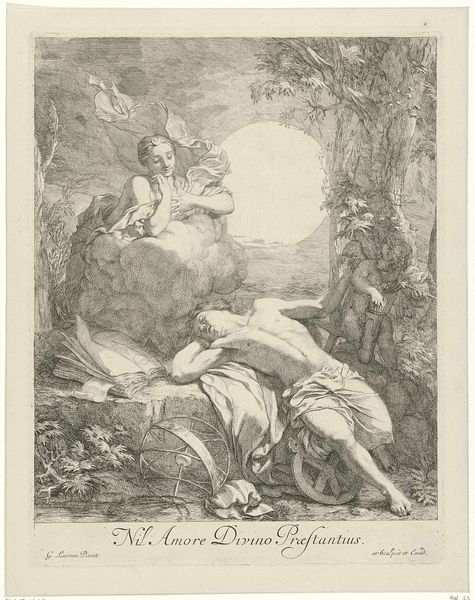
print, engraving
#
portrait
#
neoclacissism
#
allegory
# print
#
genre-painting
#
engraving
Dimensions: height 435 mm, width 344 mm
Copyright: Rijks Museum: Open Domain
Editor: Here we have "The Birth of Shakespeare," an engraving from possibly 1782 by Francesco Bartolozzi. It's presented in this warm sepia tone, depicting a woman with a child in what seems like an allegorical scene. It feels almost like a classical myth brought to life. How would you interpret its historical significance? Curator: This print offers a fascinating glimpse into the evolving cultural status of Shakespeare. The neoclassical style, popular at the time, elevated Shakespeare to a god-like figure, aligning him with the pantheon of classical poets and playwrights. It's no longer simply a representation of birth. It signifies Shakespeare's intellectual birth within British cultural history, aligning him to neoclassicism through the adoption of allegorical depictions derived from the aesthetic movement. Note the inclusion of theatrical masks—they function less as a literal reference and more as a symbolic device emphasizing the playwright's universal appeal across the public imagination. What effect do you think that might have? Editor: It's interesting to think of Shakespeare as this venerated figure rather than just a playwright. The use of allegory makes him seem timeless, outside the normal bounds of time and history. But by emphasizing those aspects does it not alienate ordinary viewers by placing Shakespeare in the same inaccessible level as the ancients? Curator: That's a great point! It is possible to see it as alienating. The tension here is how popular culture engages with established, almost sacred traditions of art, like the allegorical style adopted here, and the effect that this use of classicism has upon the understanding of cultural phenomena, such as theater. Do you think this image invites scrutiny or blind acceptance of Shakespeare as an English paragon? Editor: I think it asks us to accept it, but by questioning the placement of art within the history of art tradition, we can ask important questions regarding the use of cultural symbols to address issues regarding social representation. Thanks for offering this interesting context. Curator: It’s through these discussions we get to the deeper questions surrounding public reception of art. The context of Shakespeare's era and its role within it sheds new light onto our contemporary understanding of his relevance and lasting legacy!
Comments
No comments
Be the first to comment and join the conversation on the ultimate creative platform.
